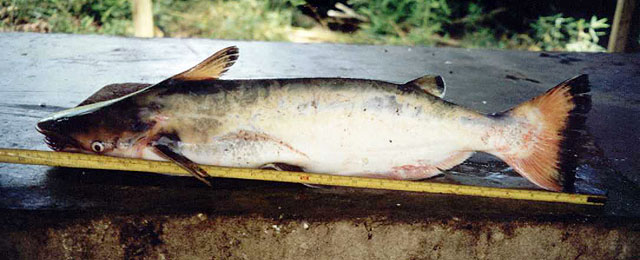| Auchenipteridae (Driftwood catfishes), subfamily: Auchenipterinae |
| 64.8 cm TL (male/unsexed); max.weight: 3,080.0 g |
|
pelagic; freshwater; pH range: 6.5 - 7.80000019073486; dH range: 20 |
| South America: Argentina, Bolivia, Brazil, Colombia, Ecuador, French Guiana, Guyana, Paraguay, Suriname, and Venezuela (Ref. 37098). Reported from Uruguay (Ref. 54736). |
|
Anal soft rays: 34-40; Vertebrae: 46-51. Body naked and elongated. Head is pointed and depressed at the top. Mouth is big and wide. The lateral eyes are situated along the level of the mouth, ensuring a vision above and below. Exhibits sexual dimorphism, like A. dentatus. The first ray of the dorsal fin is very long and has pointed spines (Ref. 35381). |
| Prefers rivers in overgrown backwaters where the current is not too strong. Reported to be nocturnal. Feeds on fish and crustaceans. The flesh is esteemed for its very fine flavor. Frequently captured with nets, with males difficult to release from the nets because of its strong dorsal spine that is bordered with denticles (Ref. 27188). During reproduction, the mandibular barbels and dorsal spine of the male change, and a copulatory organ appears at the anterior level of the anal fin. Fertilization is internal, the female being capable of keeping the spermatozoids inserted in the epithelium of her genital tract (Ref. 35381). |
|
Least Concern (LC); Date assessed: 07 August 2020 Ref. (130435)
|
| harmless |
Source and more info: www.fishbase.org. For personal, classroom, and other internal use only. Not for publication.

